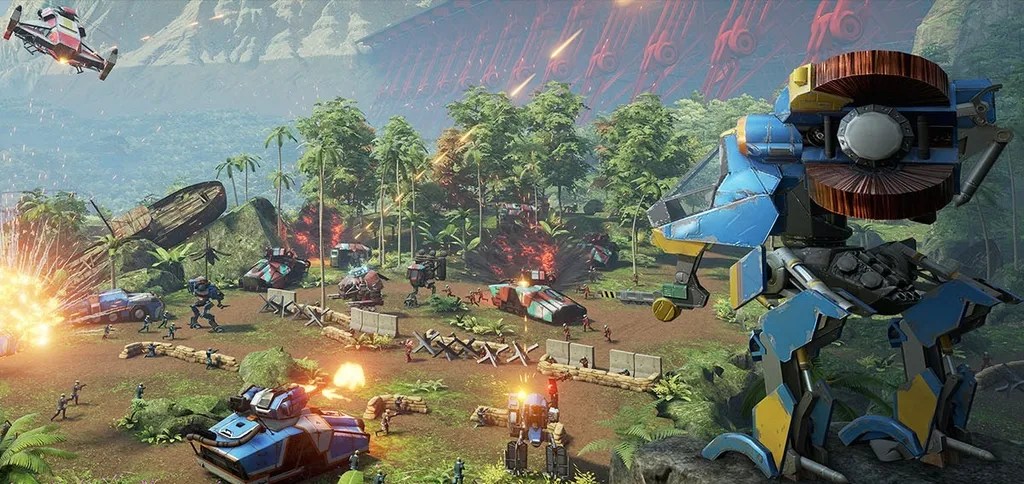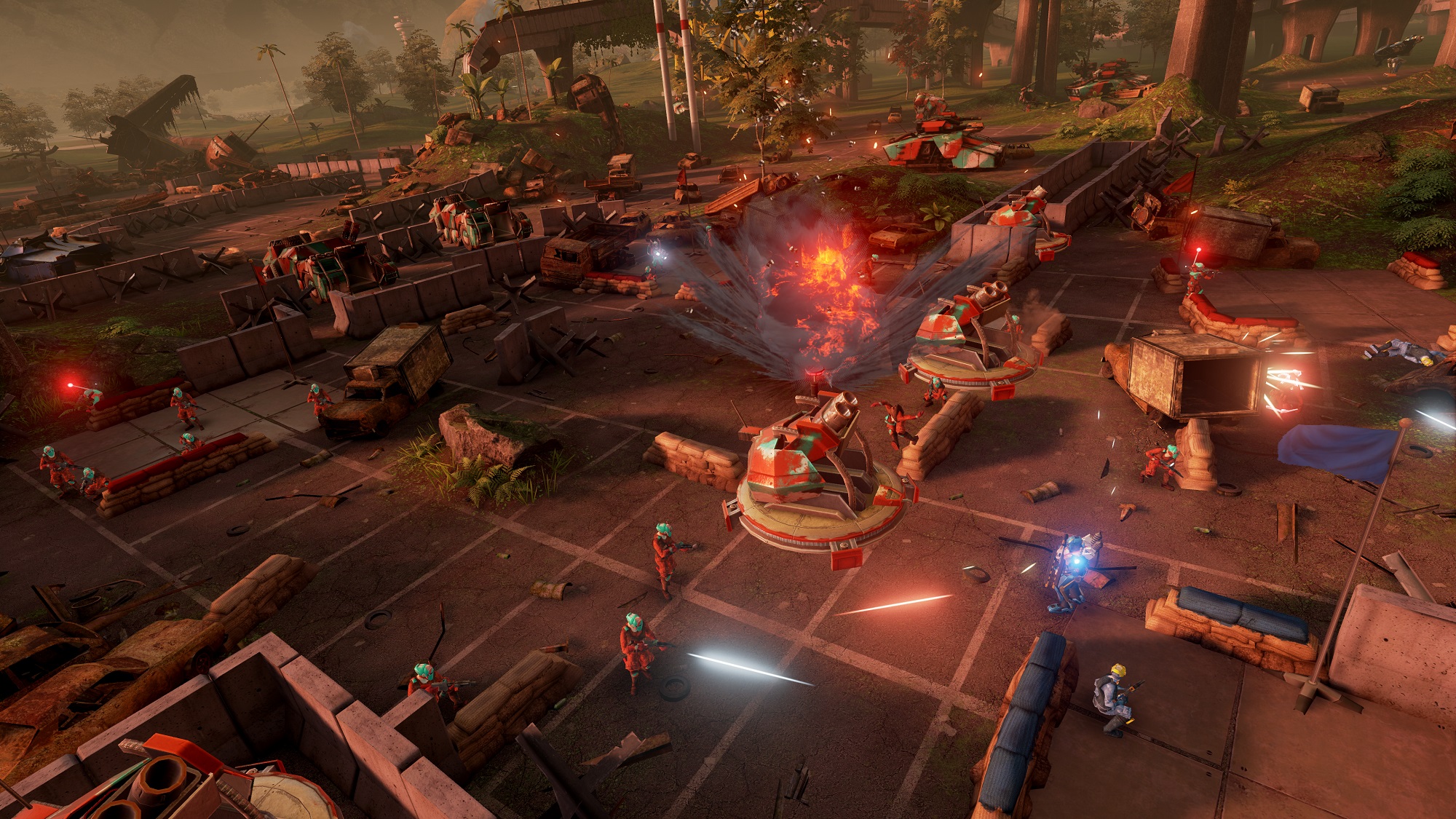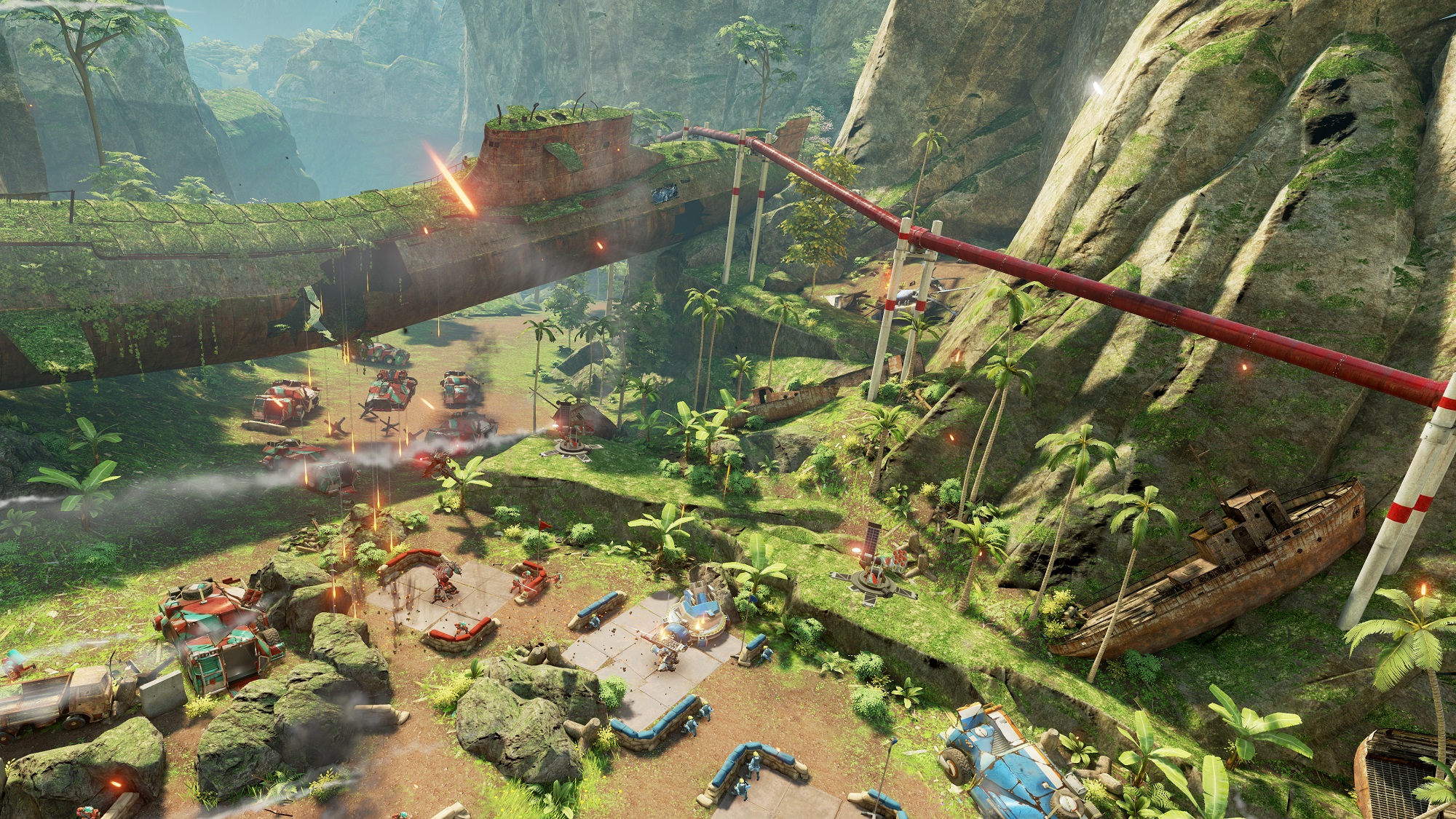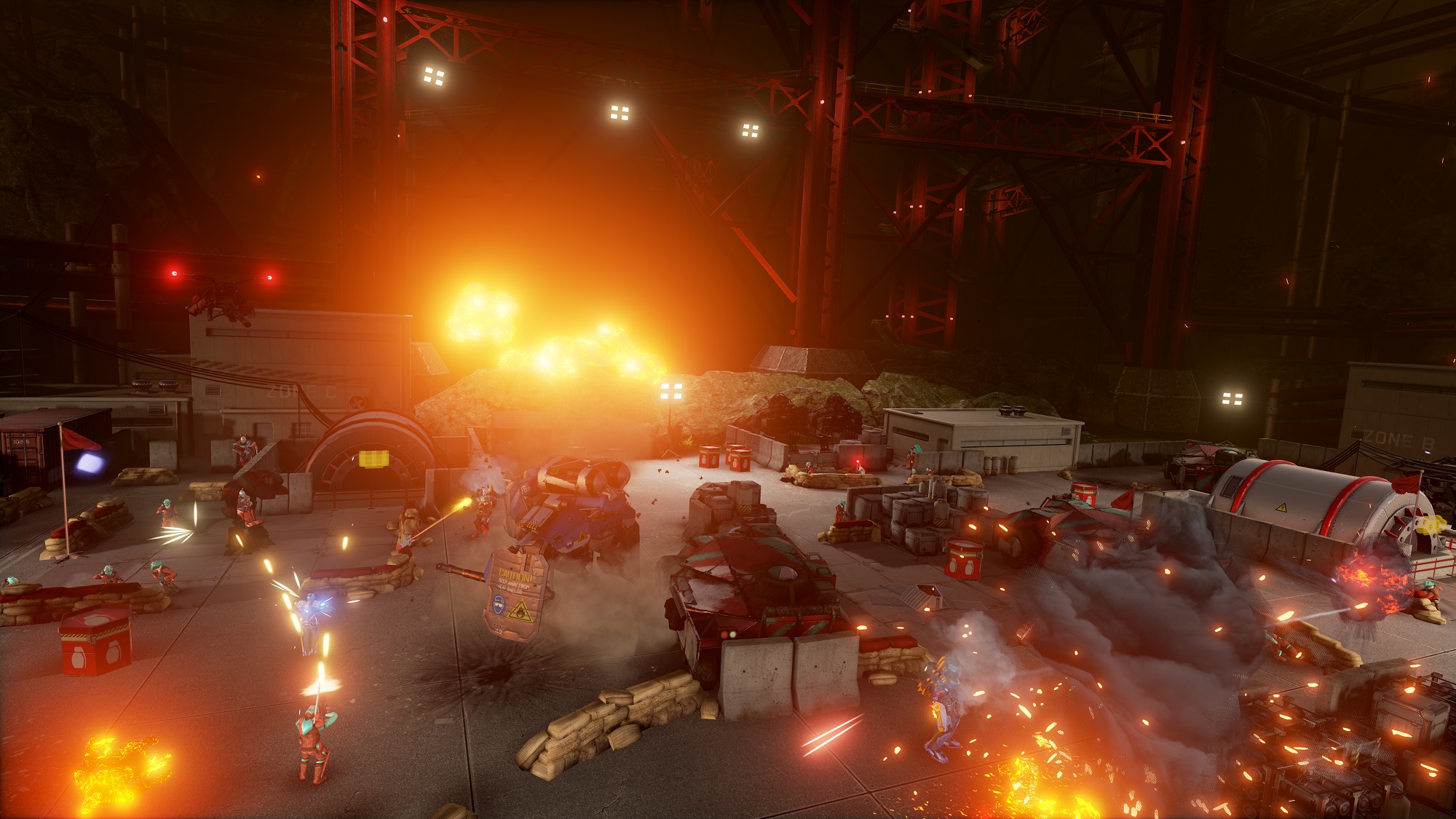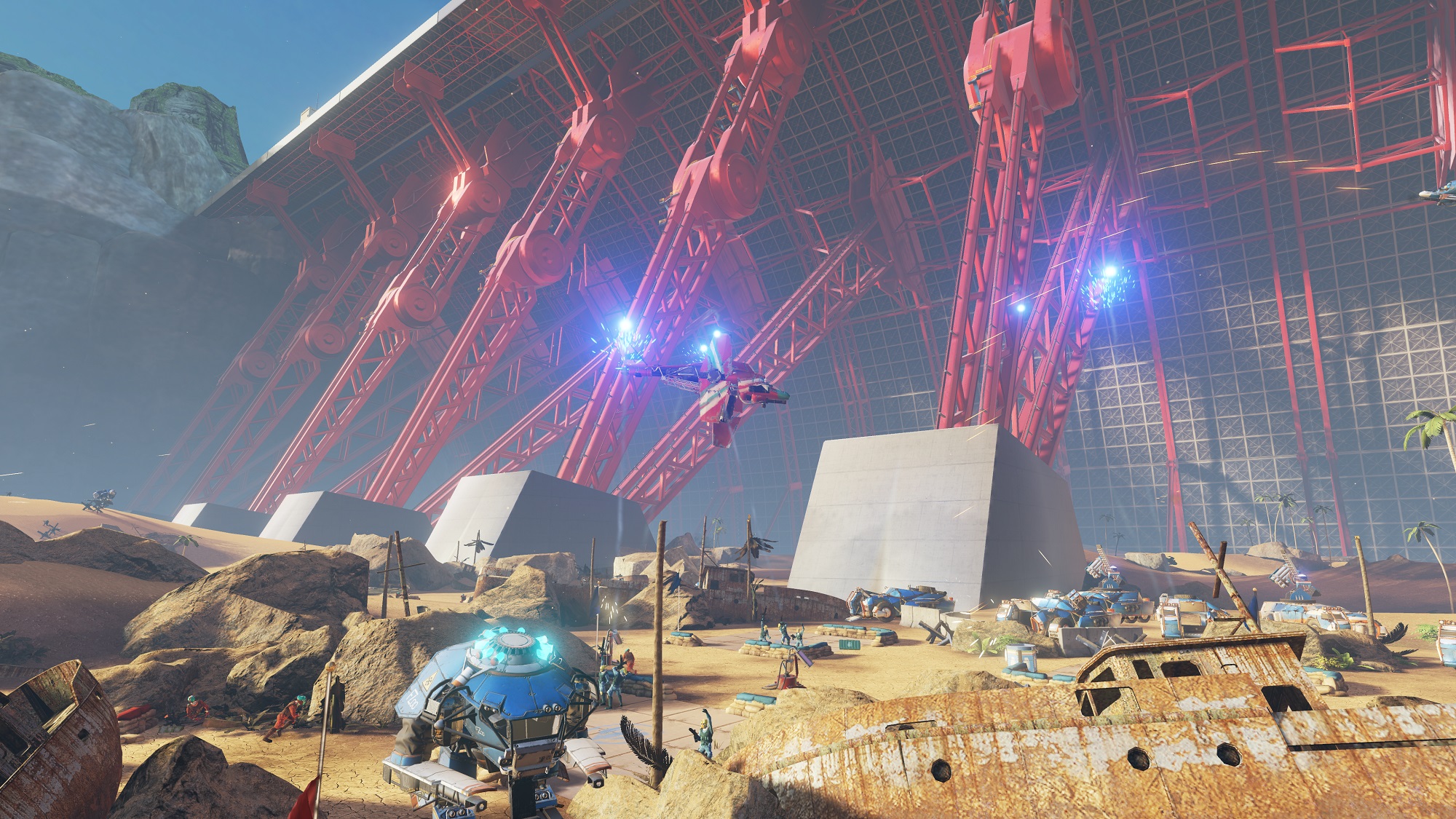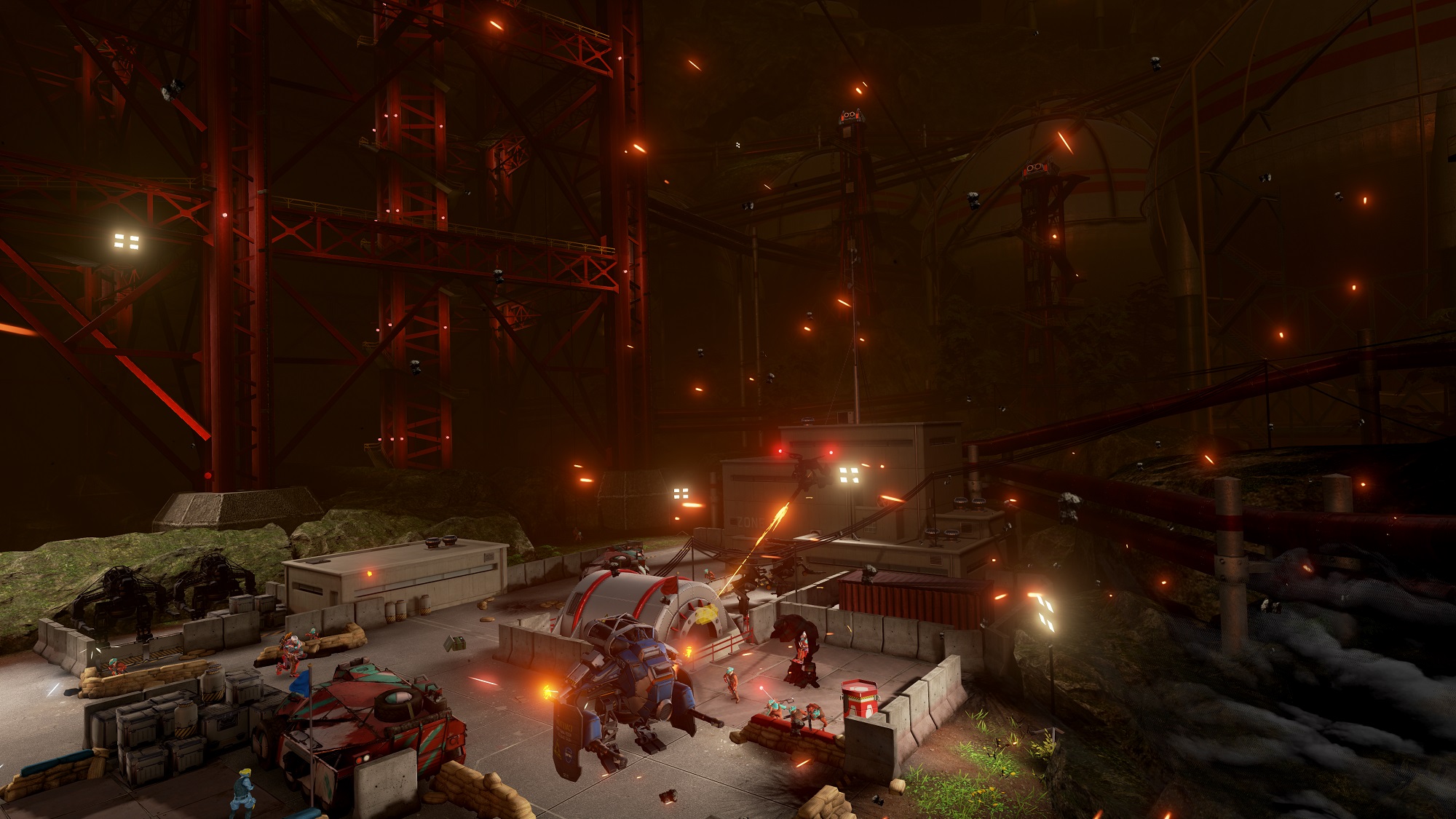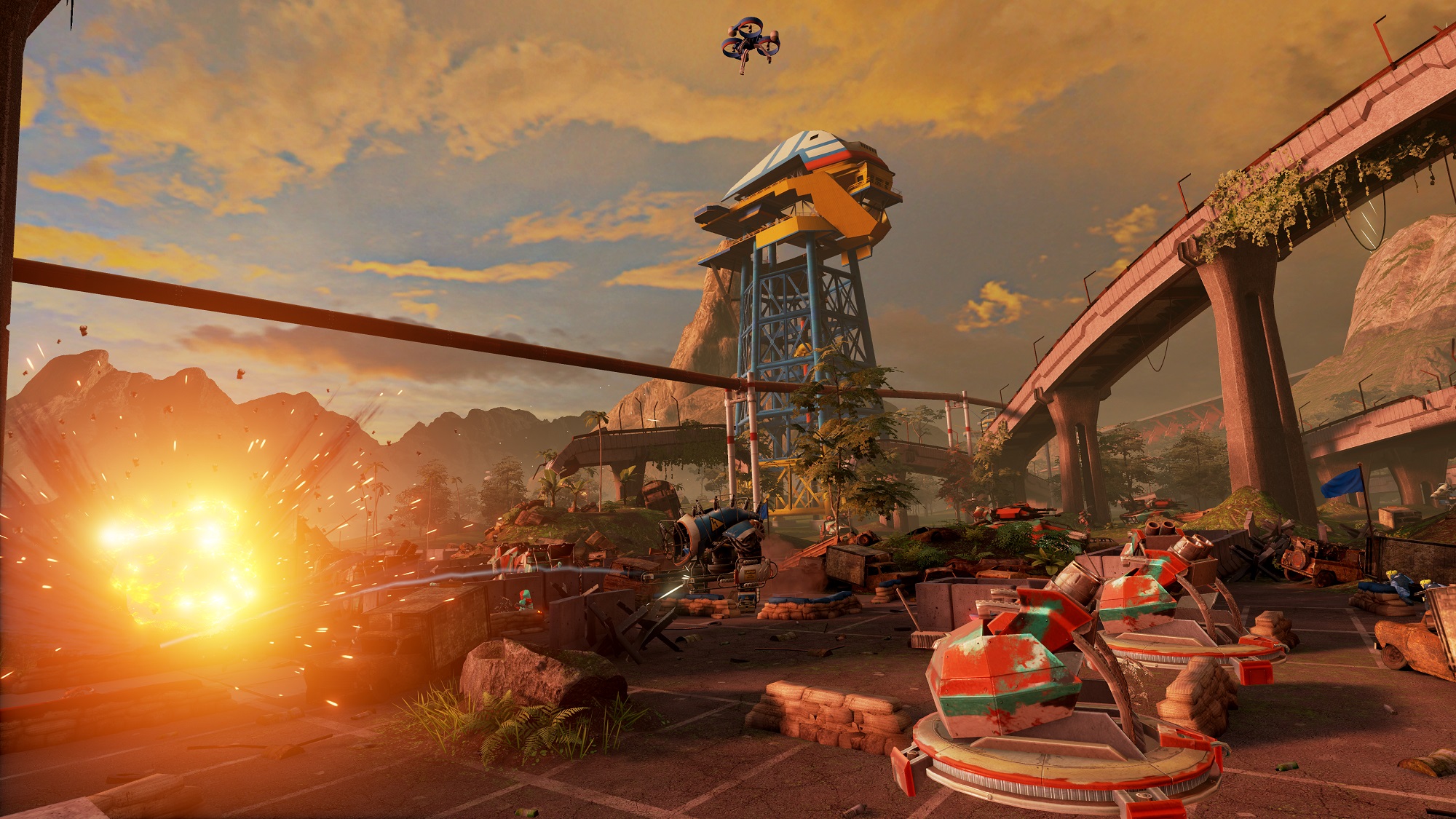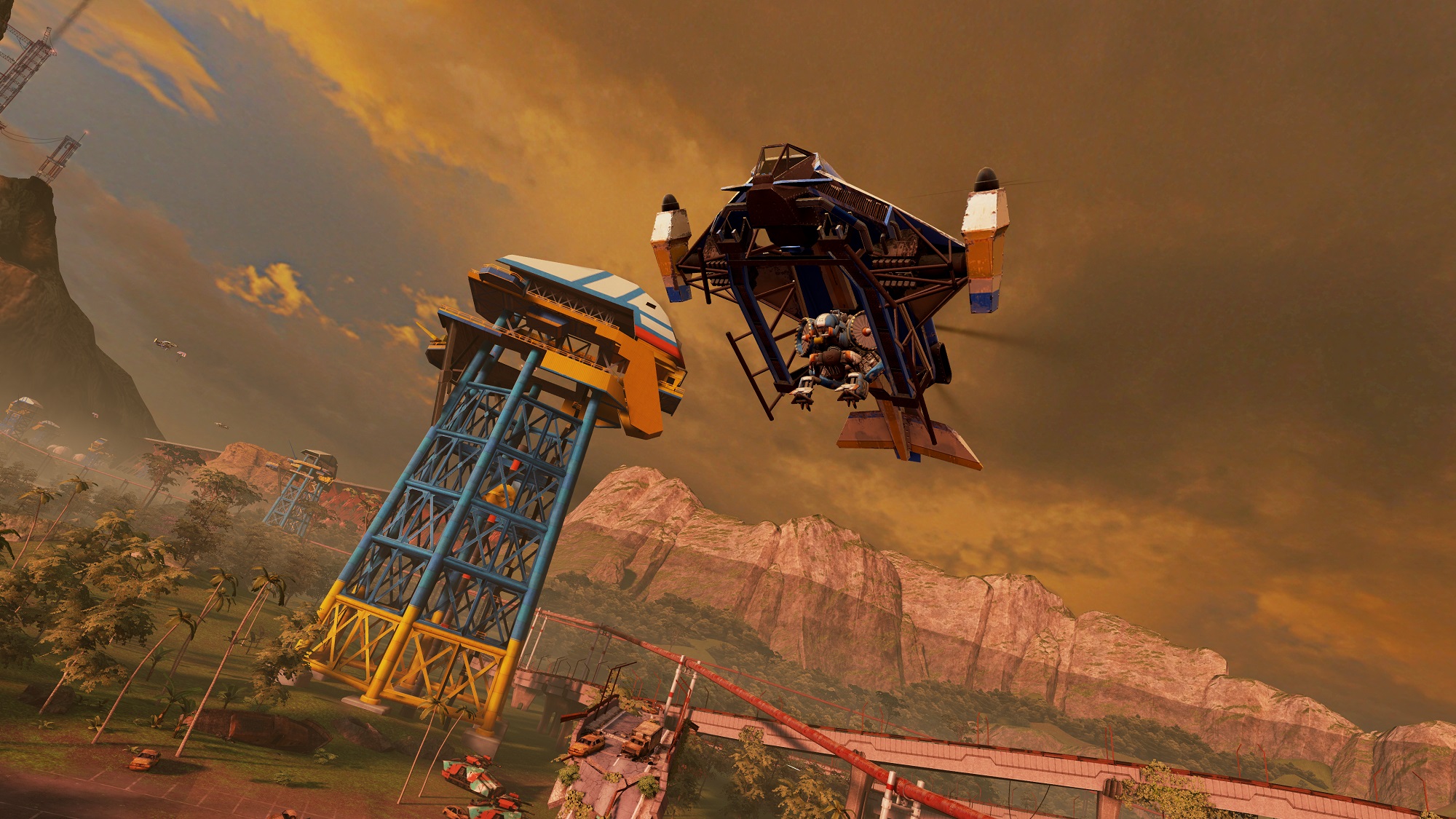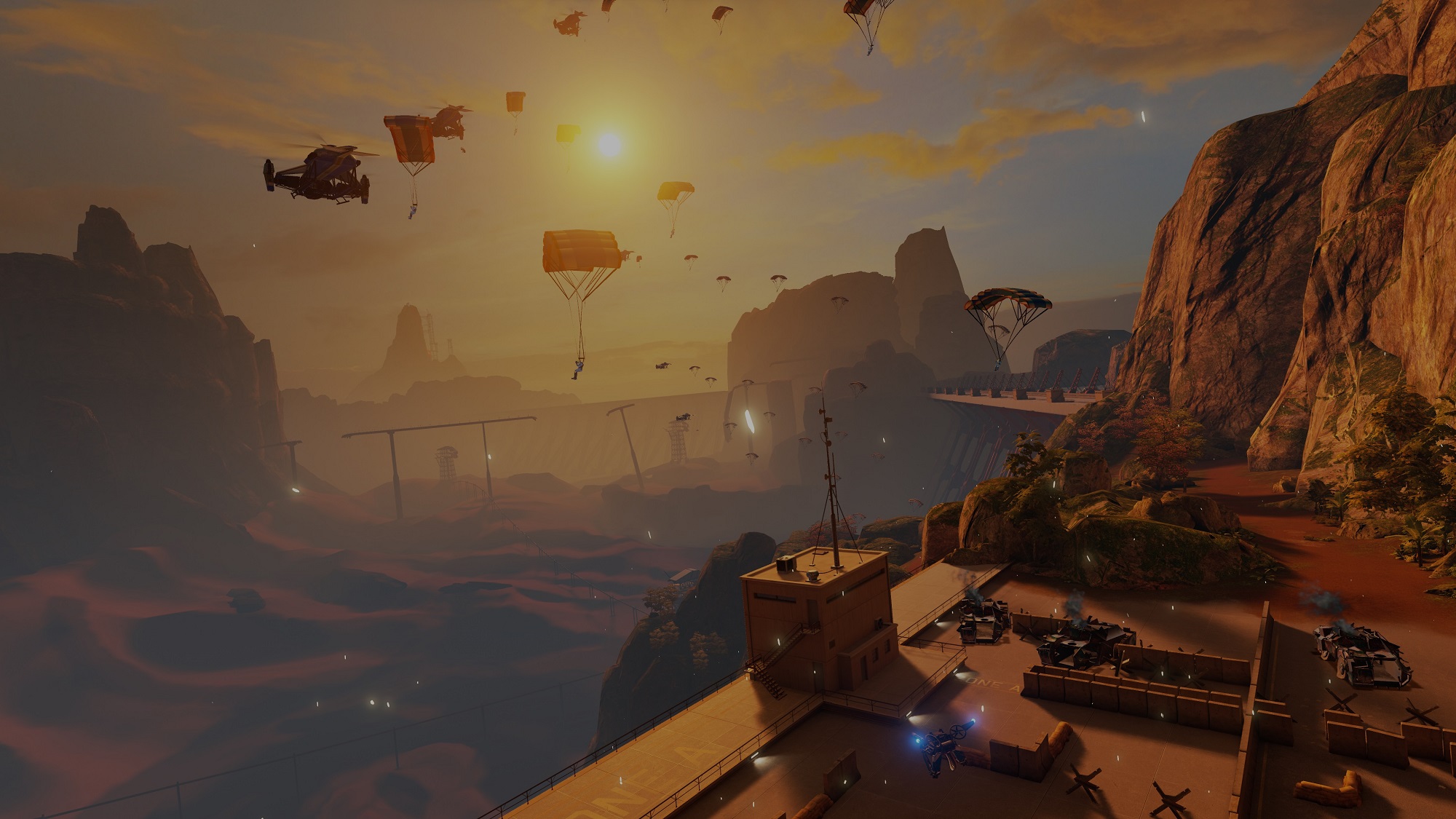Looking across the battlefield inside my Oculus Rift headset I see red and blue colored troops scuttling across the scorched battlefield, darting from cover point to cover point. Reinforcements are running low on both sides with nothing but willpower and the quest for survival keeping each team going. With only a few units left I make a dash forward, lob a grenade to flush out my enemy, and line him up in my sights as he rounds the corner. Boom. My rifle takes him out and my remaining troops cheer. Looking around the battlefield and up into the sky I can see that the overall war in Landfall is far from over, but victory still feels sweet.
Landfall is a top-down tactical action game from VR development studio Force Field. It’s being designed specifically for the Oculus Rift and was first unveiled at Oculus Connect 3 late last year. We went hands-on with it then as well, but only had time to try out two matches. This time, we played through the tutorial and then ran through over a half dozen matches online in 2v2 scenarios getting a good feel for the game and how it plays.
You can see some of those gameplay highlights below:
Gameplay in Landfall takes place from a top-down bird’s eye perspective using a gamepad, like you’re peering across a tabletop while playing Warhammer 40,000 or a modern, militaristic version of Dungeons & Dragons. You take direct control of your single hero unit that has significantly more health and does more damage than any of your NPC forces. Moving your trooper is done with the left analog stick, while aiming is done with the right. You fire your primary weapon with the right trigger and use several of your special abilities and equipment with the various face buttons.
Whereas Halo Wars is more akin to a real-time strategy game in which you issue orders and commands to your forces across a vast battlefield, Landfall is an action-packed twin-stick shooter that simply borrows a similar aesthetic and presentation. Since it’s VR, you can peer down on the battlefield, look around, and predict your enemy’s movements, all without relinquishing any control of your unit. In fact, it plays and feels like Halo: Spartan Assault and Spartan Strike, two games made by Vanguard Games before they re-branded themselves as Force Field.
What makes your individual hero units most special though is their various different loadouts. There are 12 different loadout types unlockable throughout the ranks of the game, each of which feature a different primary weapon, special ability, and most importantly, unique Strider. The Striders are giant mech units that drop down from the sky like in Titanfall that can quite literally turn the tide of a battle when used at the right time.
On release, the full game will feature a robust 4-6 hour campaign that can be played from start to finish either alone or through co-op with a friend, as well as a competitive multiplayer component. I spent most of my time in this latest preview going through matches on the competitive multiplayer side of the experience.
Matches can be played in both 1v1 and 2v2 varieties, but most maps and objectives seem to be balanced best when enjoyed in a 2v2 setting. CCO and Co-Founder of Force Field, Martine de Ronde, told me that there were roughly a dozen maps designed for the game, but each map would be split into 3-4 individual mission objectives that could each be played from either perspective on the mission.
For example, in one situation I was tasked with preventing a transport from progressing to the end of the map, while the other team had to escort it. After we successfully prevented it from being delivered, in a different area of that same environment, we engaged in another battle aimed at dwindling the reinforcement count of our enemies. This played out similar to the original Star Wars Battlefront games in that it was essentially team deathmatch, but instead of racking up the most points, each kill resulted in a loss of units for the other team. Human players counted as 10 units, which made them extra valuable.
Other objectives consisted of trying to place explosives and destroy structures on the map, defending structures from the other team, connecting beacons across the battlefield, and more. In the hour I spent playing multiplayer matches (each round was about 10 minutes long), it didn’t feel like a single battlefield or specific objective was ever repeated, which is saying a lot. Games like this live and die by how enjoyable they are to play over and over again, so a full hour of constantly discovering new content is a very good sign for a short preview.
Unlocking new loadouts will serve as a capable distraction for a while since they’re all so different and fun to master, but it likely won’t keep players coming back for months at a time. Force Field tells me they’ve got plans to offer free content updates in the form of new maps and loadouts over the lifetime of the game, which should help deliver more variety.
Top-down games aren’t the first genre I think of when I imagine the possibilities of VR, but they fit so naturally it’s a shame they aren’t explored more often. Games like Landfall are proof that just because we live in a post-Touch and post-roomscale VR world, it doesn’t mean that gamepad-based experiences necessarily have to come to an end. Above all else though, perhaps what surprised me most about Landfall, is how believably it captures the sense of scale and brutality of war. The effects that surround you in each battlefield are second-to-none in this genre of game.
Landfall is poised to launch its free Open Beta weekend starting tomorrow, February 2nd, running until Monday, February 6th. The beta will feature about half of all the loadouts and only a small number of maps. All Rift users will be able to download and play the free Open Beta from Oculus Home. The full release is intended to happen later this month with final pricing on the full game still to be determined.

